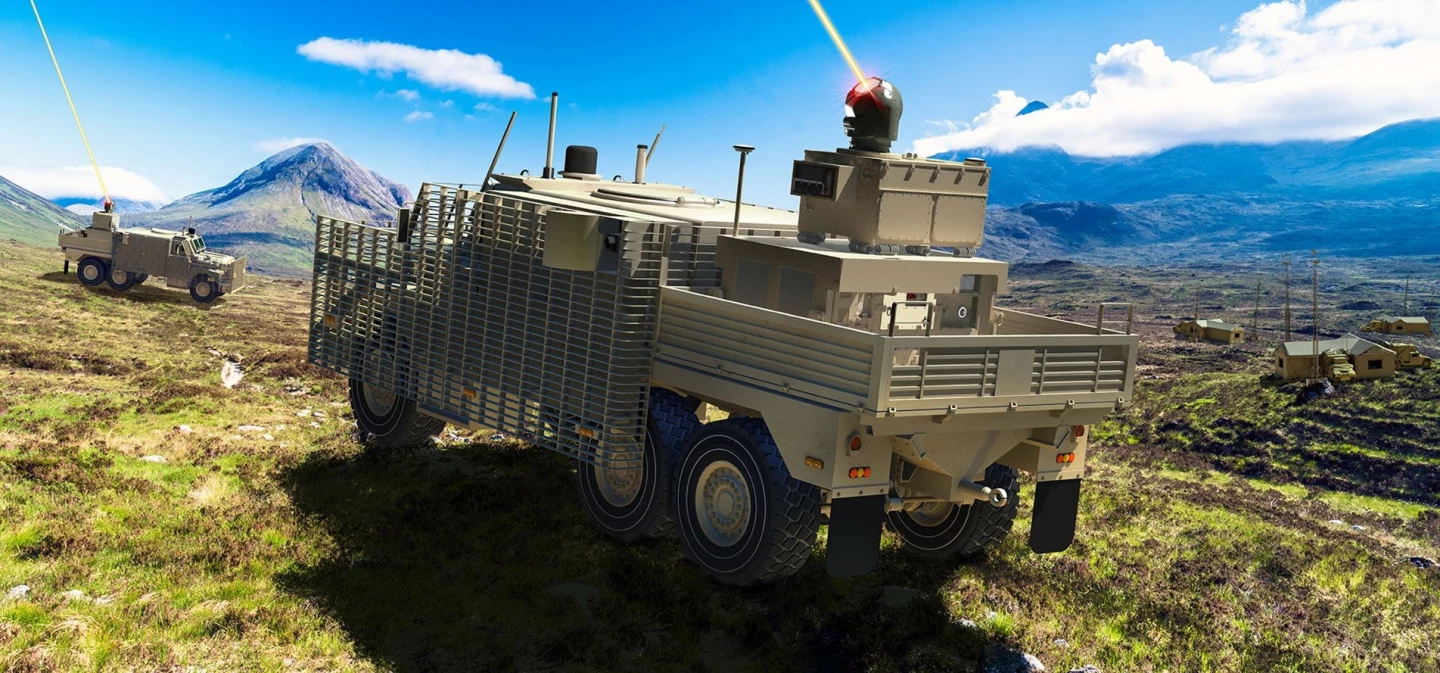The British Ministry of Defence (MOD) has given three four-year contracts worth £72.5 million (US$99 million) to consortia led by Thales and Raytheon UK to develop laser and radio frequency demonstrator weapons to be mounted on Royal Navy ships and British Army vehicles.
It wasn't so long ago that lasers and other Directed Energy Weapons (DEW) were little more than cumbersome and unreliable bench experiments often so large that they could only be installed in Jumbo Jets. With the development of increasingly powerful solid-state lasers based on coils of fiber optic cables doped with rare earth elements and other advances, these weapons have not only jumped up in firepower, they have also shrunk to the point where they can be mounted on increasingly smaller platforms.
The upshot is that many countries like Britain are becoming interested in lasers – not as potential weapons, but as practical ones that can be deployed in the field. This is not surprising because of the advantages that laser weapons have. Not only do lasers travel at the speed of light, meaning they could even take out hypersonic missiles, they only cost about a dollar a round to fire and their "ammunition" is inexhaustible as long as the electricity holds out.

In the case of the new MOD contracts, which are part of the UK Novel Weapons Programme (NWP), the objective is to produce a trio of weapons that can be installed on ships, armored vehicles, and trucks without the need for heavy modifications to the vehicle.
The first goal is to mount a laser on a Royal Navy Type 23 frigate, where it will demonstrate its ability to detect, track, engage, and neutralize Unmanned Aerial Vehicles (UAV). Meanwhile, a second demonstrator laser will be fitted to an Army Wolfhound tactical support armored vehicle to counter drones and other air threats, and an Army MAN SV truck will show how a radio frequency system can detect, track and air, land, and sea targets.
The field tests will be conducted from 2023 to 2025 and will not only deal with how the DEWs perform, but also how to maintain them as well as gathering general knowledge and experience with the technology. These tests will be carried out by Team Hersa, a joint Dstl-Defence Equipment and Support (DE&S) team tasked with learning how to procure DEWs, both laser and radio frequency systems.
"These technologies have the potential to revolutionize the future battlefield for our Armed Forces, enabling the prosecution of new targets in the land, sea, and air domains and allowing commanders to meet mission objectives in new ways," says MOD Director Strategic Programmes, Shimon Fhima, "We must exploit at pace the cutting-edge technologies developed by the talented scientists and engineers across the UK to capitalize on its benefit."
Source: Ministry of Defence






